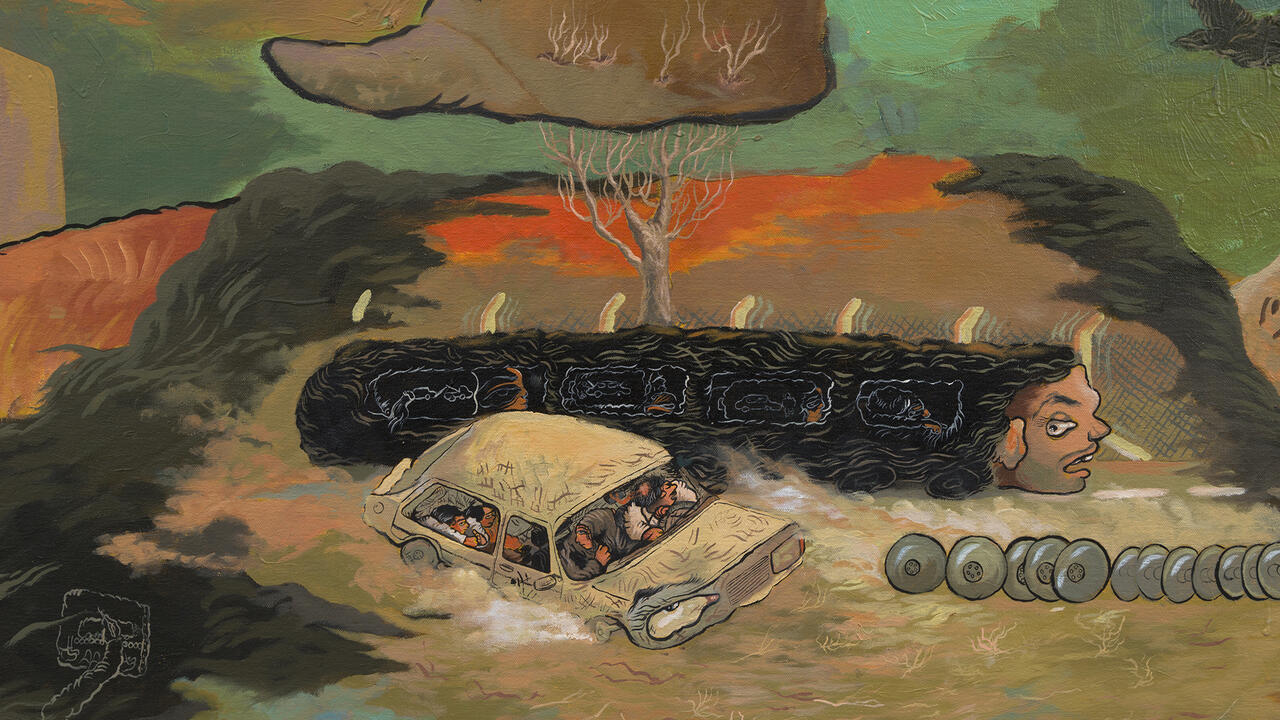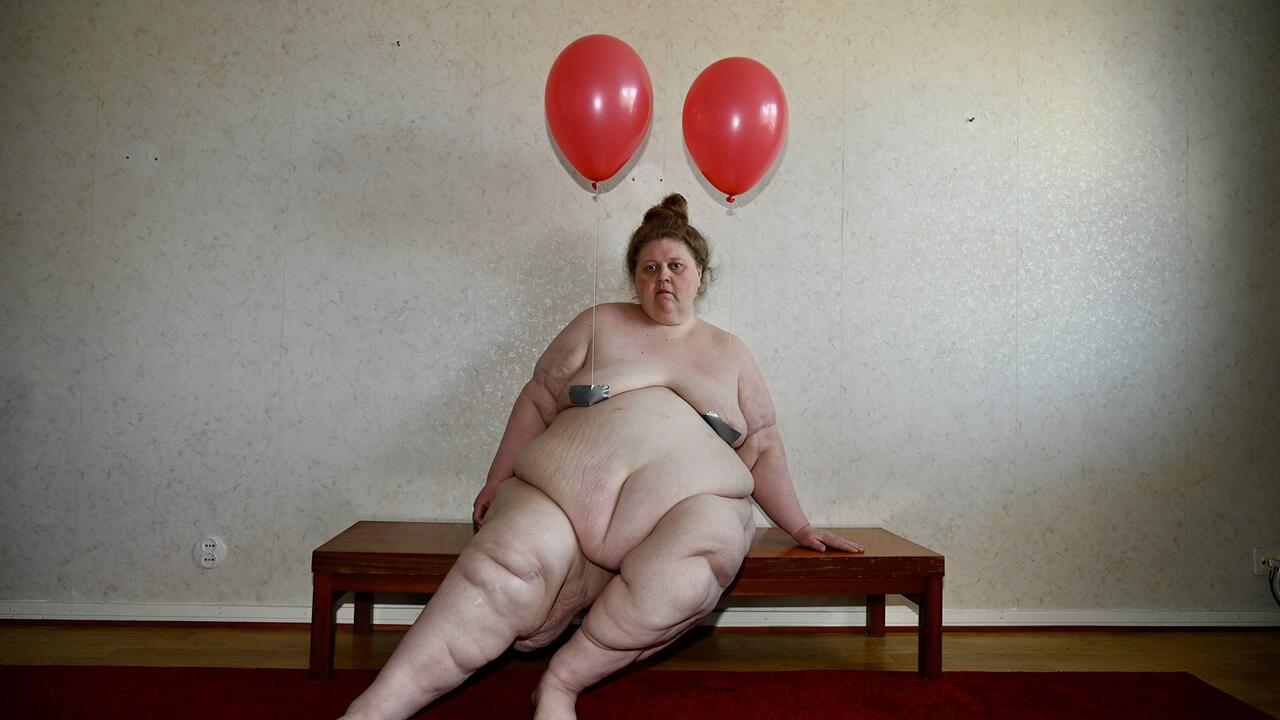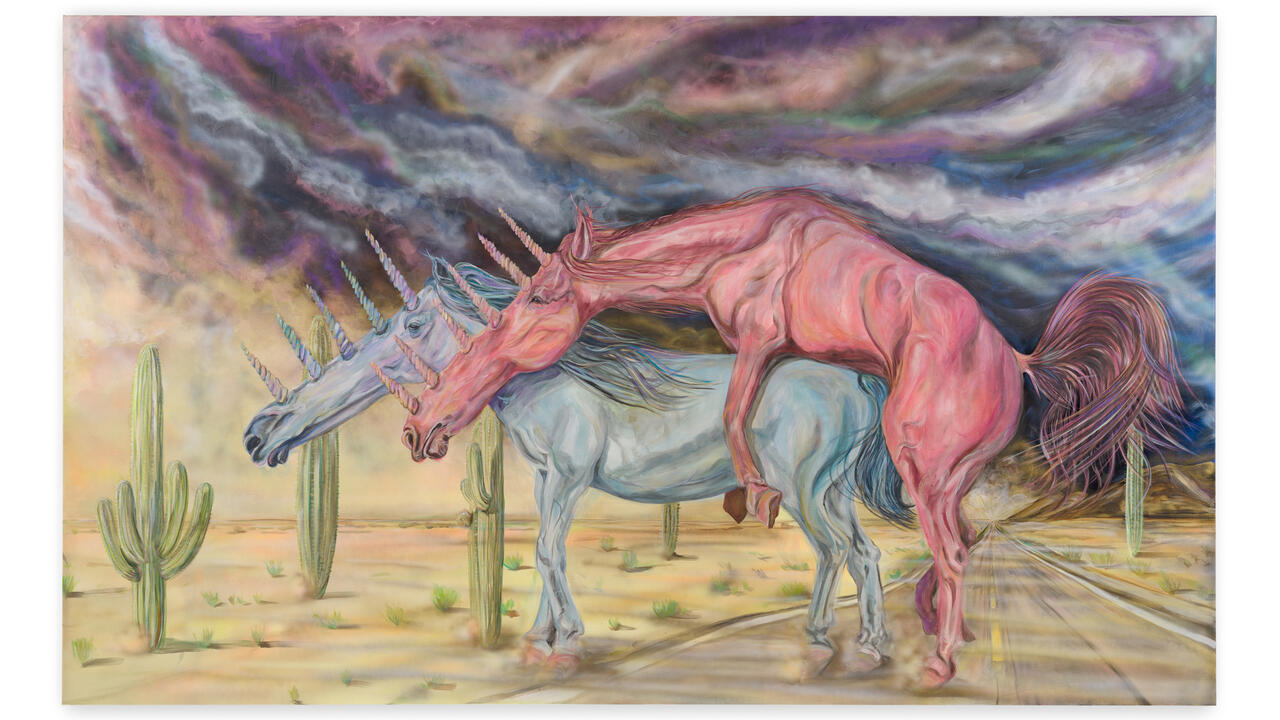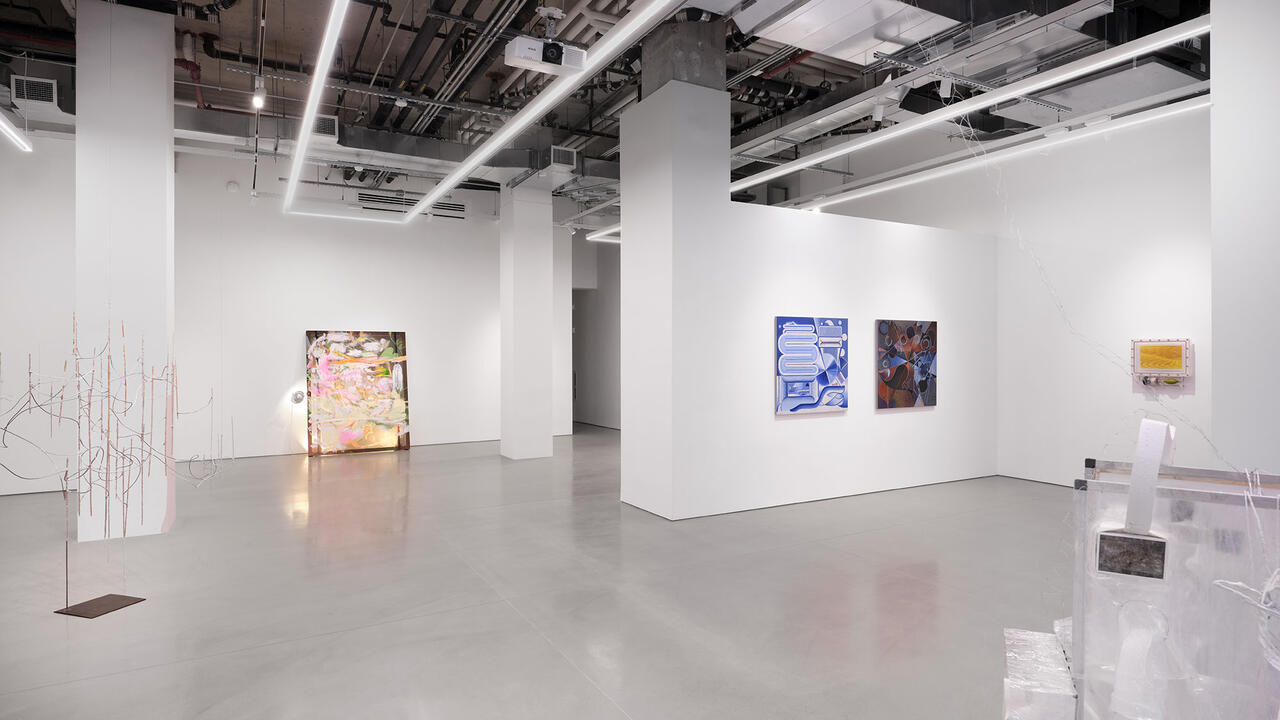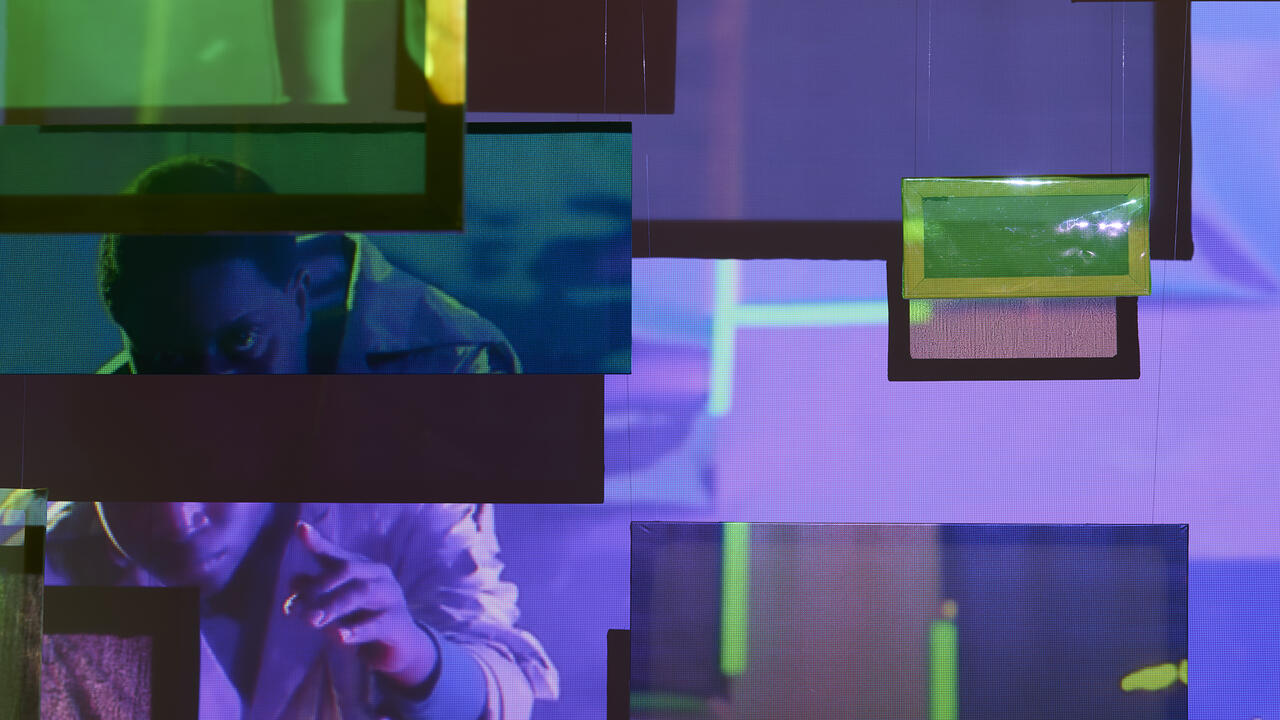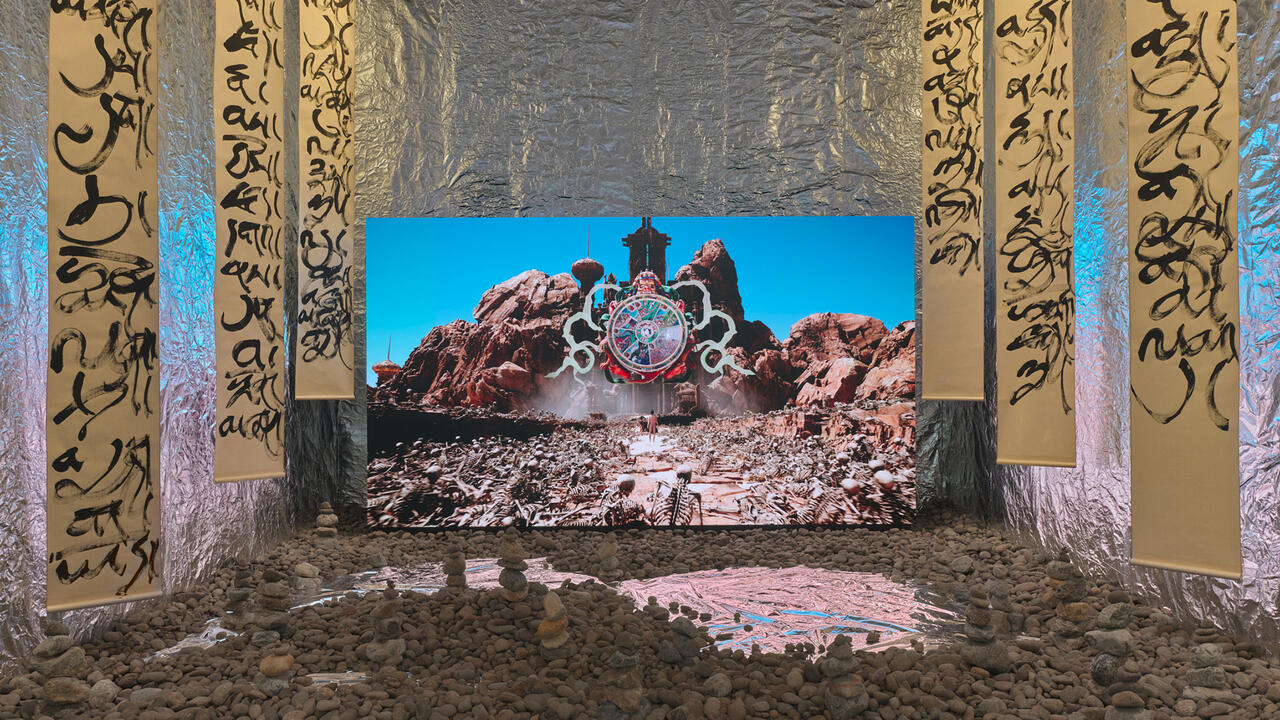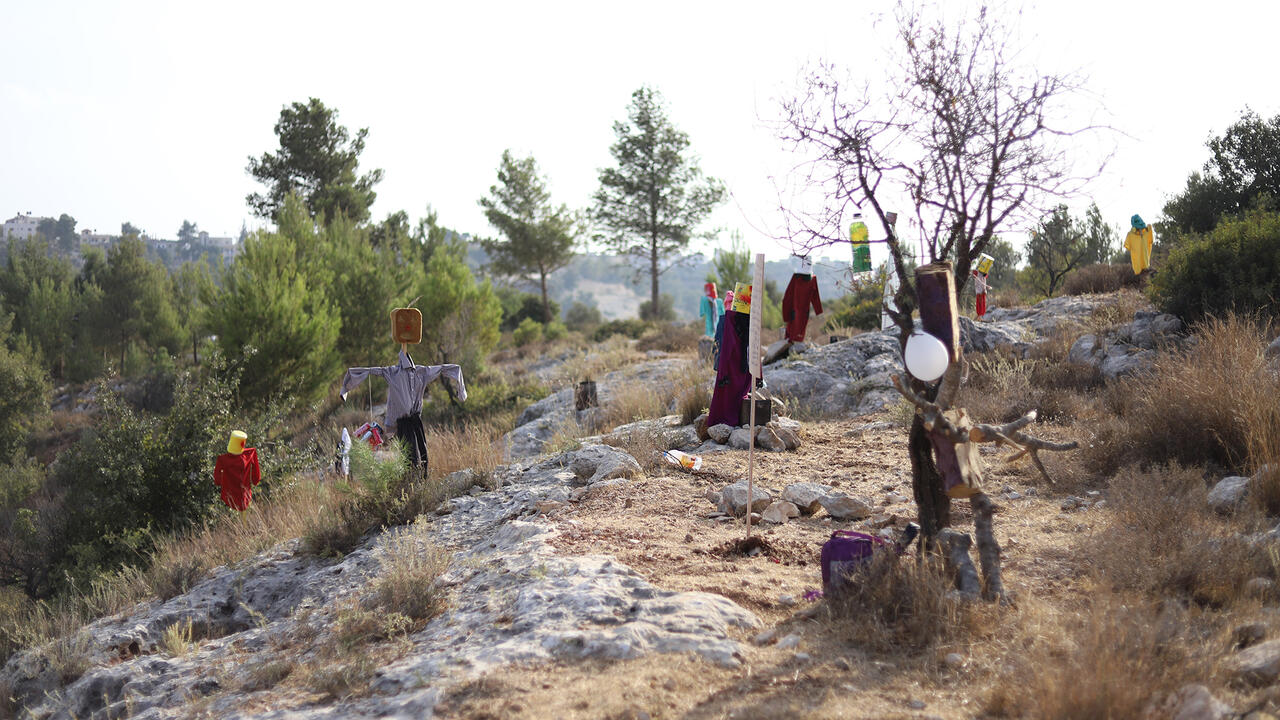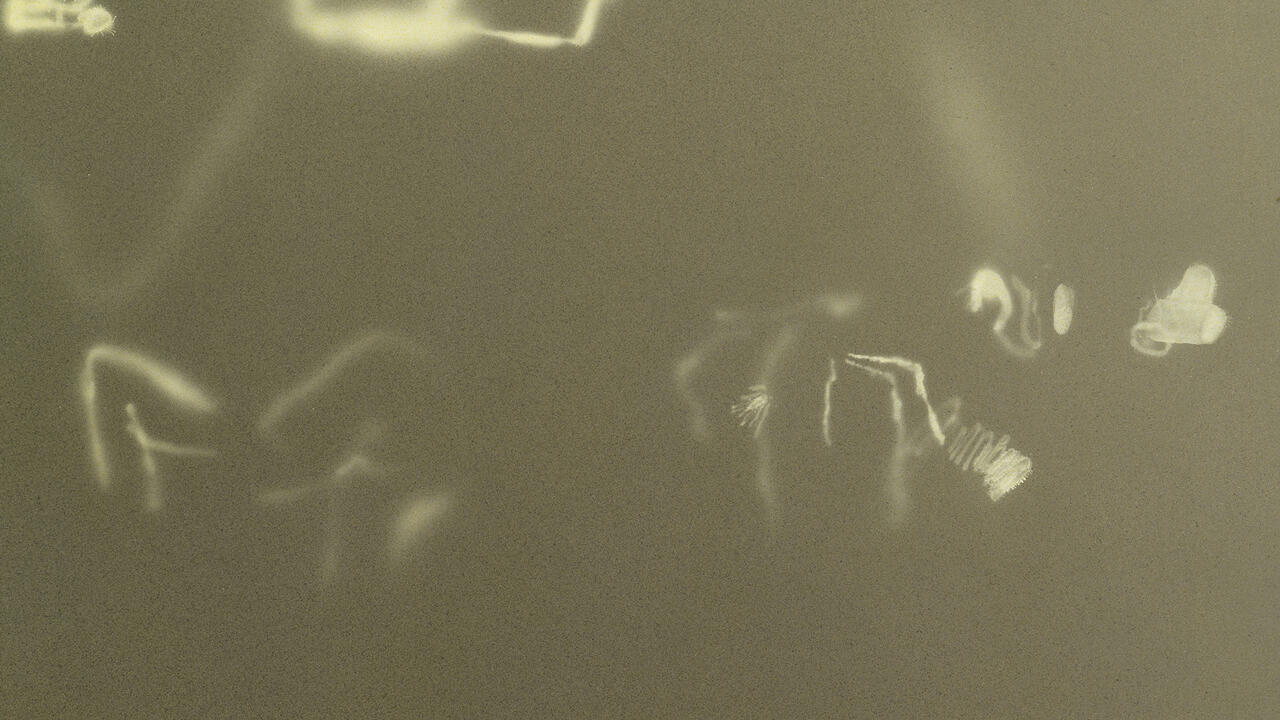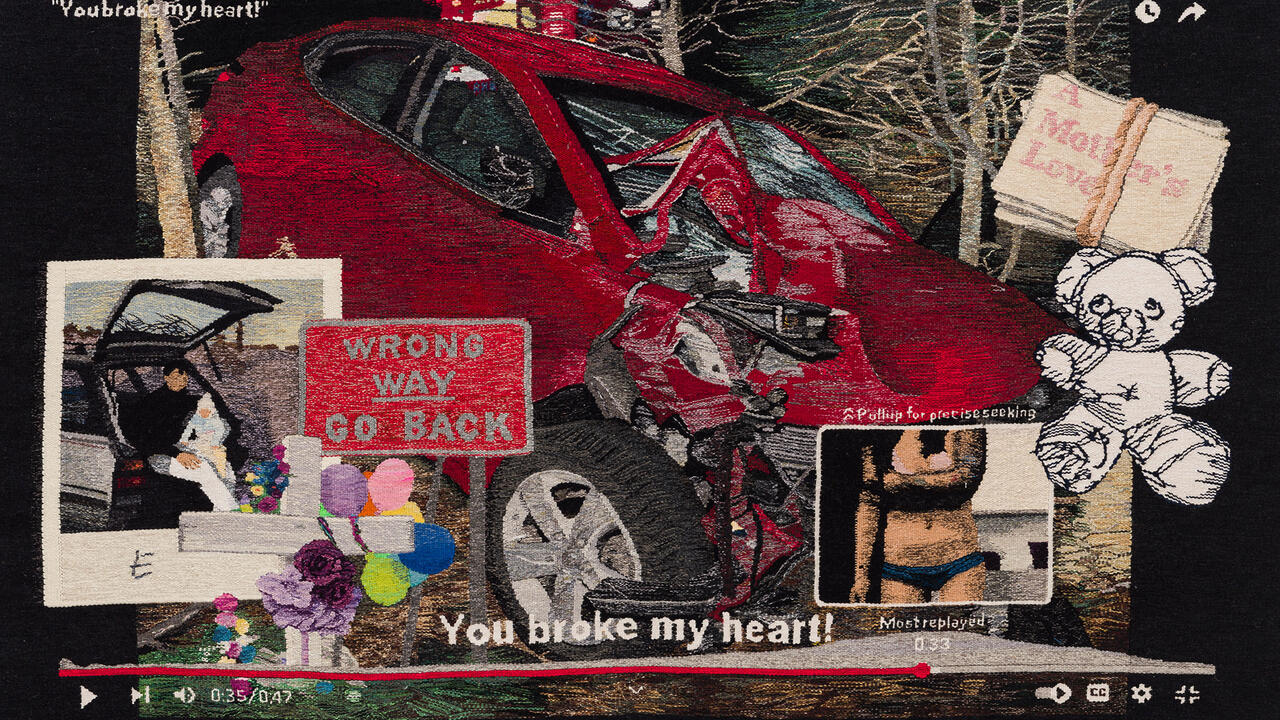AA Bronson's School for Young Shamans
John Connelly Presents, New York, USA
John Connelly Presents, New York, USA

Little compares to the shock of seeing the skeletal images of Jorge Zontal and Felix Partz in ‘Negative Thoughts’, AA Bronson’s breathtaking exhibition of 2001. The men were Bronson’s partners in the Conceptual media-based art collective General Idea, and the photos, taken in 1994, capture the ravaging effects of AIDS: Zontal just months before he died; Partz just hours after his death. These images stand among the most disarming encounters with mortality made during that decade and are a rare testimonial to life and death. ‘Negative Thoughts’, a breakthrough show for Bronson as a solo artist, was also a raw self-portrait in which he publicly shared his grief for his lost friends and partners, as well as for the passing of an artistic identity and experiment – General Idea – that had defined his professional career.
Intimate experience and introspection continue to characterize Bronson’s artistic practice, which has shifted away from reflective memoriam and towards spirited living. Although he has lost his collaborative moniker, Bronson continues to make work with others, and ‘AA Bronson’s School for Young Shamans’ shared his experience as an elder statesman who learns significantly from the younger queer artists he is helping to guide.
The exhibition was divided into two sections. In the main gallery were works by Bronson spanning 40 years, and although many of the pieces on view were self-portraits, none evinced a fixed identity of the artist. Witness the mesmerizing ‘Mirror Sequence’ series (1969–70), in which Bronson photographs his own fractured reflection; Evidence of Body Binding (1970), which caught disembodied sections of his own flesh tied taut with string; costumed portraits shot by Zontal in the mid-1970s; or the recent Self-portrait, August 2, 2007 (2007), a colour photograph in which the artist’s naked body is captured in the reflection of a silver orb that sits amid the detritus of his office desk. The suggestion is that Bronson’s ‘self’ is an amalgamation of the circumstance and people that surround him – an impression that is strengthened by the inclusion of printed ephemera from his archives that reference trauma (newspapers from John F. Kennedy’s assassination) and transgression (assorted folios dealing with sexually ‘aberrant’ behaviour).
Bronson describes his General Idea years as a time in which the group eclipsed the individual, and this exhibition suggests that he still locates himself in reference to those he holds most dear. By including a billboard-size picture of his lover Mark cradling his premature daughter Anna, or self-portraits by Zontal, Bronson continues to define identity in part through shared experience. In this respect the ‘young shamans’ he enlisted are a similarly clubby group, and the onslaught of art work that occupied the side gallery and comprised the show’s second half was rife with insider references. The focal point was a shrine-like tent, Cabine (2008), by Bronson and Scott Treleaven, around which densely hung drawings, photographs and films competed for space. Cabine was the site of an opening night performance in which a nude Michael Dudeck sat perfectly still while holding a fish. After the fact the canopied cabana felt over-theatrical, as did item idem’s armour-like coat made of gold Louis Vuitton bags and dedicated to the original shaman–artist Joseph Beuys. Elsewhere, spirituality and sexuality collided in interesting ways. In Christophe Chemin’s film The Gold Room (2004) the artist’s constant jumping, often in the nude, turns into a levitation through the spaces of an apartment, and J.X. Williams’ assorted brooms, paddles and measuring sticks, resting against the strewn floor, straddle folk religion and flagellation.
Curator Bill Arnheim describes Bronson’s practice as the ‘interweaving of tantalizing pleasures and profound trauma’, themes that resonate throughout the younger men’s work. Particularly impressive was Naufus Ramirez-Figueroa’s Masturbating in the Fatherland (2007), a provocative film in which scenes of the artist masturbating with a carrot are intercut with footage of his musician father singing a Guatemalan folk-song. Pride and enjoyment are evident in both scenarios, colliding brilliantly. Also excellent was Bronson and Terence Koh’s collaboration The painter looks through to the other side of the hole/In search of the White Knave (2004/2007), a life-size replica of twinned toilet stalls joined by a glory hole. Koh’s side was covered in cut-out photocopies of gay pornography, while Bronson’s pristine white space offered the lingering visitor an untitled artist’s book filled with pictures of spread rectums downloaded from the Internet.
The painter … resonated on multiple levels, from the fetishes of architecture, design and gallery installation to the evolving sites of illicit sex from public rest-rooms to the Internet and beyond. It also invited physical and emotional engagement, underscoring the latent performative nature of much of the work here. Inside the stall, I felt acutely aware of my outsider status as a straight woman, but I also felt privileged to bear witness to a vital dialogue Bronson created among a sub-set of the young gay art community. As with his portraits of Zontal and Partz, he continues to be a ‘survivor’ who helps viewers and ‘young shamans’ alike to continue to turn towards life.









